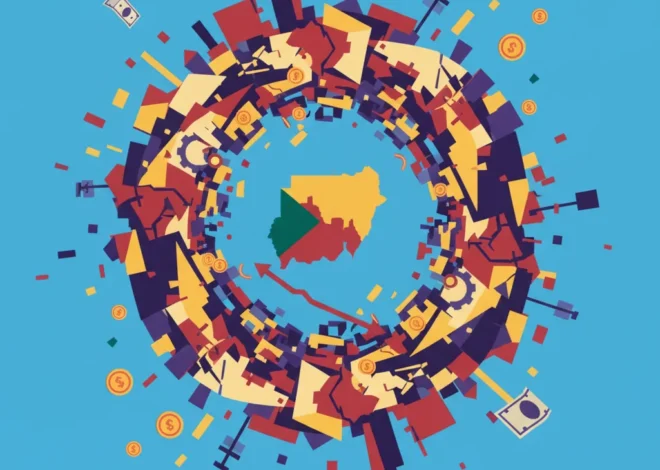
Digital Highways for Dirt Roads: How One Startup is Revolutionizing South Africa’s Township Economy
Imagine a bustling, vibrant marketplace, teeming with energy and entrepreneurial spirit. It’s not a sleek co-working space in Silicon Valley, but a township in South Africa. Here, millions of small, informal businesses—from corner stores known as spaza shops to home-based caterers and local artisans—form the backbone of the community’s economy. Yet, for all their drive, they’ve been largely excluded from the digital revolution, facing a critical barrier to growth: the “last-mile” problem. How do you get your product to a customer when formal addresses are rare, and reliable delivery is a luxury?
This is the challenge that entrepreneur Talifhani Banks decided to tackle head-on. He saw not just an obstacle, but a massive opportunity to build a bridge between traditional commerce and modern technology. His solution is a modern delivery system, a sophisticated piece of software designed specifically for the unique landscape of South Africa’s smaller firms and townships. This isn’t just another delivery app; it’s a story of grassroots innovation, economic empowerment, and a blueprint for how technology can create inclusive growth in emerging markets.
The Untapped Potential of the Township Economy
For anyone unfamiliar with the term, South African townships are urban living areas, often underdeveloped, that were historically reserved for non-whites under Apartheid. Today, they are dynamic, densely populated communities bursting with economic activity. The “informal economy” in these areas is anything but small. In fact, South Africa’s informal sector is a significant economic force, employing millions and contributing substantially to the nation’s GDP. According to a report by the International Labour Organization, the informal economy accounts for around 18% of total employment in the country.
However, this vibrant economy has traditionally operated on its own terms, facing a unique set of logistical hurdles:
- Lack of Formal Infrastructure: Many homes and businesses lack formal street names or numbered addresses, making automated GPS navigation nearly impossible.
– Cash-Dominant Society: A heavy reliance on cash transactions complicates digital payments and order processing.
– Inefficient Transport: Businesses often rely on expensive and unreliable minibus taxis or informal couriers to move goods.
– Trust and Security: Concerns about security for both goods and delivery personnel are a constant challenge.
These barriers effectively lock small township businesses out of the booming e-commerce market, limiting their customer base to whoever can physically walk to their location. Talifhani Banks recognized that solving the delivery puzzle was the key to unlocking their immense potential.
The Day the Internet Stumbled: Decoding the Latest AWS Outage and What It Means for You
Building the Solution: A Tech Stack for the People
At the heart of Banks’ initiative is a powerful, cloud-based platform. By leveraging a Software-as-a-Service (SaaS) model, he provides small businesses with access to enterprise-level logistics technology without the need for massive upfront investment in hardware or software. For a small monthly fee, a spaza shop owner can now manage orders, dispatch drivers, and track deliveries from a simple smartphone.
Let’s break down the technology that makes this possible:
1. Cloud-Native Infrastructure: The entire system runs on the cloud, ensuring it is scalable, reliable, and accessible from anywhere with an internet connection. This means as more businesses and drivers join the platform, the system can grow with them without crashing. It also allows for continuous updates and improvements without disrupting service.
2. Automation and AI-Powered Logistics: The real magic lies in the automation. When an order is placed, the system can automatically find the nearest available driver and calculate the most efficient route. While the initial version may use simpler algorithms, the potential to integrate artificial intelligence and machine learning is immense. An AI-powered system could:
- Analyze traffic patterns unique to townships (which often differ from formal city grids).
– Predict demand hotspots to position drivers proactively.
– Optimize “batching,” where a single driver picks up multiple orders from nearby vendors going in a similar direction.
– Implement dynamic pricing based on distance, time of day, and demand.
3. Programming for Accessibility: The user interface (UI) and user experience (UX) are critical. The programming team behind such a platform must focus on creating an app that is intuitive for users who may not be tech-savvy. This means simple navigation, multi-language support (South Africa has 11 official languages), and functionality that works well on lower-cost smartphones and in areas with intermittent internet connectivity.
4. Robust Cybersecurity: As these small businesses digitize their operations, they become potential targets for cyber threats. A core component of the platform’s success is its commitment to cybersecurity. This involves securing user data, protecting payment information, and ensuring the integrity of the platform against fraud. This builds the trust necessary for widespread adoption. As Banks brought this modern system to life, he was not just delivering packages, but also delivering digital security and peace of mind.
The Day the Internet Stood Still: Deconstructing the AWS Outage and Our Digital Future
The Tangible Impact: A Tale of Two Systems
The transformation this technology brings is best understood by comparing the old way with the new. For a small business owner, the difference is night and day.
Here is a breakdown of the logistical shift:
| Metric | Traditional Method (Before) | Tech-Enabled Platform (After) |
|---|---|---|
| Ordering Process | Phone call or WhatsApp message; manual and error-prone. | Standardized in-app ordering; automated and tracked. |
| Cost of Delivery | High and unpredictable; often requires hiring a whole taxi. | Low, transparent, and standardized pricing. |
| Speed & Efficiency | Slow and unreliable; depends on driver availability and knowledge. | Fast and optimized through route-planning automation. |
| Tracking & Transparency | None. The business owner and customer are in the dark. | Real-time GPS tracking for both sender and receiver. |
| Payment | Cash on delivery; risky and hard to manage. | Integrated digital payments; secure and provides a digital record. |
| Customer Reach | Limited to immediate walking distance. | Expanded to the entire township and beyond. |
This shift has a powerful ripple effect. A home-based baker can now sell to customers across the township. A local artisan can reach a wider market for their crafts. According to the World Bank, boosting SME productivity is critical for job creation, and technology is a key enabler of this growth (source). By providing access to a modern logistics network, Banks’ platform directly empowers these businesses to grow, hire more people, and contribute more formally to the economy.
The Road Ahead: Challenges and Future of Township Tech
The journey is not without its challenges. Driving adoption requires overcoming a degree of digital skepticism and investing in training and support for business owners. Ensuring consistent service quality across a decentralized network of drivers is a constant operational battle, one that all major ride-sharing and delivery platforms face. Furthermore, as the platform grows, it will need to navigate complex local regulations and potential competition.
However, the future is incredibly bright. The data generated by the platform is a goldmine of insights. Imagine being able to provide a small spaza shop with analytics on its most popular products, peak order times, and customer demographics. The platform could evolve beyond logistics to offer integrated financial services, inventory management, or a B2B marketplace connecting vendors with suppliers.
The success of this South African venture is a testament to the power of targeted, context-aware innovation. While the world is often mesmerized by the latest developments in generative AI or quantum computing, the most profound impact of technology is often felt when it solves fundamental, real-world problems for underserved communities. Talifhani Banks’ work is a powerful reminder that a piece of well-designed software can do more than just optimize a process—it can pave a new road to opportunity.
Disney's Churn Crisis: What a Celebrity Scandal Teaches Us About AI, SaaS, and the Future of Tech
Conclusion: More Than a Delivery, It’s a Declaration
The story of this South African startup is far more than a business case study. It is a declaration that talent and ingenuity are universal, and that the world’s most complex problems are often best solved by those who live them. By combining the power of the cloud, the intelligence of automation, and a deep understanding of community needs, Talifhani Banks is not just delivering packages; he is delivering access, empowerment, and a vision for a more inclusive digital future. It’s a powerful lesson for entrepreneurs, developers, and tech leaders everywhere: sometimes, the next billion-dollar idea isn’t in a boardroom, but waiting to be discovered on a dusty township road.


